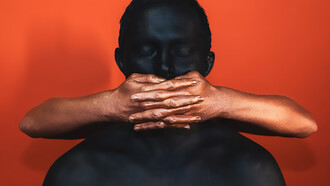In an ever-increasingly politically aware society, we are seeing how, more and more often, many important figures of today’s society and modern pop culture are incorporating political coding into their work, frequently making references to major political groups of the past, and creating a cultural site of resistance. Two prominent examples that share similarities not immediately obvious upon superficial observation are the Black Panther Party of the seventies and the Riot Grrrls of the nineties.
The Black Panther Party was a political movement which began in the United States of America. The group was founded by two students, Huey Newton and Bobby Seale, in October 1966 in Oakland, California. Similarly, Riot Grrrl, which began in the early 1990s, was a feminist punk movement which also began in the United States of America in Washington. It began as an underground subcultural movement which explored feminism, punk music and politics. The Riot Grrrl movement was coined by two women named Allison Wolfe and Molly Neuman - both members of the feminist punk band Batmobile, who sought to encourage the inclusion of women in a male-dominated punk scene. As punk grew, it became a movement which was rife with hypermasculinity and many women subsequently became more and more marginalised; particularly as punk evolved and branched of into subgenres such as “hardcore punk” the movement itself became a struggle for meaning, where many women would still seek to participate in the DIY, anarchistic aspects that came with the movement.
These two historical groups were examples of how culture became a site of resistance during their times and how both their influences can still be seen today, creating cultural resistance in modern day pop culture. Uponl exploring both the Riot Grrrl and Black Panther movements, one can uncover two pivotal examples of how culture can manifest into and come to embody a site of resistance. Firstly, Longurst’s theory of resistance as a form of “counter power” (1996) will be applied to the two groups whilst also exploring how it manifested itself both socially and politically between the two. The role of representation will also be explored, particularly through the way in which it brought about both “agency and resistance” (During, 1996); whilst also looking at both During (1996) and Fiske’s (1991) ideas exploring the relationship between subordinate and marginalised groups within society and popular culture.
Longurst (2008) expands on the idea of resistance, describing it as something which rises in opposition to a culture - particularly a hegemonic culture or a culture which holds the dominant cultural “power”. Hegemonic culture (Longhurst, 2008) is the dominant culture of a society, the term hegemony itself defined as the “ability of dominant groups in society to exercise control over weaker groups not by means of force or domination, but by gaining their consent, so that the unequal distribution of power appears to be both legitimate and natural." This often manifests itself as a set of ideals which have been cultivated for long periods of time throughout history, and are often reinforced everywhere, such as within the media, within politics, and within general society, so much so that we have grown to accept these ideologies as the accepted "norm."
It is usually considerably difficult to go against hegemonic norms and ideologies imposed upon us. They are enforced by “dominant groups," or a power, such as a political power, an economic power, or groups which face no marginalisation, for example. The “counter power” which consequently arises is one which often enables more marginalised members of society to have their voices heard, or to dismantle a dominant “power” whilst also maybe introducing a new change - often achieved through means of “full scale social and political rebellion."
The seminar “Introducing Cultural Studies” by Dr. Nathaniel Weiner (2021) explores how agency in and of itself is a way of taking on issues within society and changing them, and how resistance exists as a form of agency, undertaken to usher in a shift in society (as cited in Weiner, 2021). One relevant example explored is the role of resistance amongst the youth, exploring how “oppositional tendencies” can often end up leading to “cultural creativity," especially between the older, hegemonic demographic and the suppressed youth. This counterculture resistance has often seen the genesis of many youth subcultures, such as punk, which is particularly relevant to some of the arguments explored in the examples in this essay. Within these subcultures, young people adopt lifestyles and ideologies that differ from the hegemonic ones imposed on them.
This is a form of counterculture resistance in and of itself. The resistance within most youth subcultures in history were examples of what is referred to as the 'micro’ and focuses mainly on counterculture through style and music, for example. However, some forms of resistance adopted by the Black Panther movement, for instance, also adopted forms of ‘macro’ resistance - choosing to protest through means of riots and revolution, for example.
Both During (1996) and Fiske (1991) explore the idea of a subordinate group and how these subordinate groups initiate change both within society and change amongst themselves. The lecture “The Politics of Culture” by Dr Nathaniel Weiner (2021) explores the relationship between inequality and struggle. It explores how culture is hierarchical and “a site of struggle and resistance, which makes culture political.”
The lecture explores the many different inequalities that exist, from gender inequality to race, class, and heteronormative inequality. This also ties into representation, as there are important links between the different types of inequality and representation. The lecture also explains how we “understand the world through representation,” and therefore, understanding two of the most prominent forms of representation for this essay—race and gender representation—plays an important role in understanding the relationship between the hierarchical culture and the resistance of subordinate groups that consequently arises.
Another reading which explores the concept of counterculture is “Jeaning of America” (Fiske, 2011, p. 67) which uses the wardrobe staple of jeans, which are described as a “bank of potential meanings” in the sense that they have been readapted, repurposed, and reappropriated by many different subordinate groups, also demonstrating how “pop culture is extremely contradictory in societies where power is unequally distributed.”
Longhurst’s theory of counter-culture (2008) can be applied to the Black Panther Movement: the concept of resistance as something which happens when a subordinate group rises in opposition against a dominant cultural power is reflective of how the Black Panther movement was one which saw marginalised, “subordinate” groups in America (such as the Black/African American communities, the poorer “ghettoe” communities of the USA and - in some branches later on in the movement, women and the LGBTQ+ community) rise in opposition against what they perceived as racist, capitalist, and imperialist powers that ruled America at the time, creating a site of uprising and resistance. Many of the political issues that saw the genesis of the movement in the sixties and seventies are still major issues in today’s society, most notably, police brutality, and could be said to demonstrate how, in this way, culture is still a site of resistance in many of the ways in which it was back then, too.
One article titled The Black Arts Movement and the Black Panther Party in American Visual Culture (Woodard, 2020, pp. 1–3) comments on the uniforms worn by some of the members of the Black Panther movement as an “image that made a distinct physical statement for masculine self-defense: an afro haircut, black beret, blue shirt, black leather jacket, and guns, as well as a bandolier across the chest. Here, During’s (1996) teachings that “groups with least power practically develop their own readings of, and uses for, cultural products” could be applied: through the means of visual culture, the article is basically exploring how the members of the movement took certain pieces of clothing, put them together, and creating a meaningful uniform/form of visual culture.
The second example in this essay is the underground feminist punk movement Riot Grrrl. Similarly, both Longhurst’s (2008) and During (1996) and Fiske’s (1991) exploration of a subordinate group within society is applicable in the sense that, not only are women already a marginalised, “subordinate” group, in the nineties, when Riot Grrrl was formed, the punk movement had been around for quite a while and yet it was not inclusive in the sense that many women felt especially excluded. The “cultural power” within the punk movement and its many branches were men and their ideals of hypermasculinity which often punctuated many aspects of punk, particularly subgenres such as heavy metal or hardcore punk.
As explained in the reading “Introducing Cultural Studies” by Longhurst (2008, p. 82) “whatever the nature and types of relationships between men and women in whatever part of the world, there is inequality, men are the dominant sex and regarded as superior to women.” Feminism played a massive role in the Riot Grrrl movement. Feminism “campaigns against the social and political inequalities between men and women” (Longhurst, 2008, p 83). Punk, in a way, was a site of cultural resistance which brought about the Riot Grrrl movement. Women created “agency” and rejected the sexism in punk by creating a movement where their voices could be heard and become a part of punk.
Both the Black Panther and Riot Grrrl movement are examples of how culture is a site of resistance. The two movements serve as examples of “subordinate groups” in society partaking in agency - initiating change and readapting elements of culture to make them more inclusive and create their own meaning. Throughout this essay, I have explored how different theories have supported the argument that these movements have exemplified culture as a site of resistance and how different readings have explained and explored the cultural significance and the meaning behind the actions of these movements and how and why similar movements came to be. The impacts of these two movements have expanded way beyond when they began and ended and some of their influences are still relevant and explored today. Culture as a site of resistance expands way beyond the Black Panther and Riot Grrrl movements - even today we still have societal and cultural hierarchies which eventually lead to the introduction of resistance and counter-powers.














